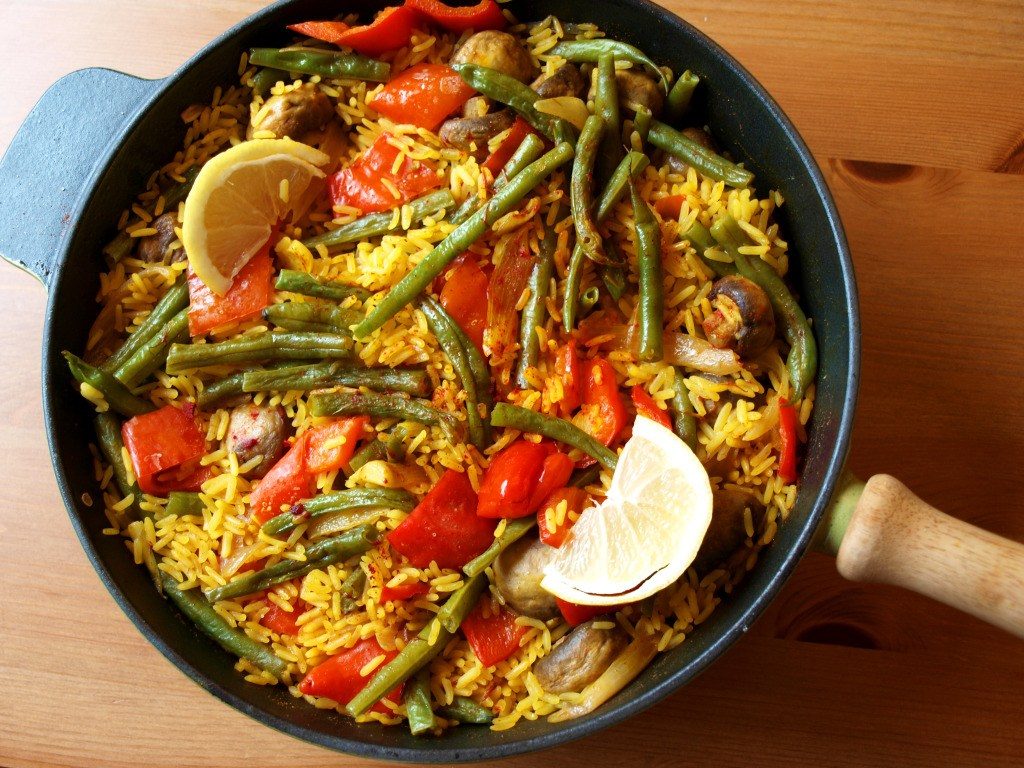With a penchant for adding chorizo or jamón to every dish going, Spain is not often a country associated with veganism (chorizo ice cream, anyone?). With this in mind, it was with some trepidation that I prepared myself for a week-long holiday in southern Spain with my family (all 100% omnivorous).
Now, my family are very understanding of my veganism, however I’m not about to drag four people across a city in 40-degree heat to find an obscure café that someone reviewed online 5 years ago, which may or may not serve vegan cake.
So here are five tips that, in my experience, help make travelling as a vegan enjoyable. These tips are tailored to traveling in Spain, but could be applied to any destination where vegan food is not readily available.

5 Tips on Surviving as a Vegan on Vacation In Spain and (And Everywhere Else)
1. Stay somewhere with self- catering facilities

I’m not saying you must bring an extra suitcase full of food and just hang out at your Airbnb every day. One of the best parts of travelling is eating out and trying the local cuisine, but it can also be helpful to be able to stock up at the supermarket and eat a few home cooked meals; especially if the local restaurant owners are likely to look at you like you have two heads if you say you don’t want pieces of pig in your soup. Of course, if you’re travelling on a budget then a couple of home-cooked meals can also save a fair bit of money.
2. Learn the Language

It is only fair to learn a few basic phrases to explain what you can and can’t eat; if you make the effort to learn some of the local language, people are more likely to make the effort to accommodate your needs. A key phrase in Spanish is:
“Soy vegano. No como carne, pescado, leche y huevos”
“I am vegan. I do not eat meat, fish, milk, and eggs”
Even this might need some clarification, for example, you might have to specify that you don’t eat cheese (queso) or cream (crema). Learning the word for “without” is also helpful, for example, when ordering soup without cream (Sopa sin crema). Some of the most important words you can learn are “please” (por favour) and “thank you” (gracias); if you are staying somewhere where veganism isn’t common, you might be the first vegan someone has met; you want to make a good impression! People may not understand your lifestyle choices, so it is good to be polite and understanding if they are not sure what to serve you. Download a translation app which you can use offline to interpret menus, or ingredients on labels in shops.
3. Learn which dishes to look out for

Find out if there are any vegan-friendly local dishes. A typical Andalusian tapas dish is Espinacas con Garbanzos (spinach and chickpeas), this is a pretty simple dish, but made using fresh ingredients it is delicious. Gazpacho (cold tomato soup) is also a typical dish of the region, and is usually vegan friendly.
As mentioned previously, it is very common to add jamón (ham) to many dishes, and this isn’t always mentioned on the menu. For example, a typical dish of the region called “porra” is often translated on menus as “cold vegetable soup”, and you could be forgiven for assuming it is a similar dish to gazpacho. However, it is traditionally served with sliced boiled eggs and ham on top, so make sure you say “sin huevos y jamón”. Patatas a la pobre (potatoes and peppers fried with olive oil) and Ajo Blanco (cold almond and garlic soup) are often vegan though. Patatas bravas, is often made with mayonnaise or aioli, so if you order it be sure to say “Patatas bravas sin mayonesa ni alioli, por favour”.
You may also wish to scope out alcohol in advance (since your average bartender will almost certainly not know what’s vegan). To do this you can use the website Barnivore. Luckily the most popular brands of beer in this area of Spain are vegan friendly (including Alhambra, Cruzcampo, and San Miguel). Wine is another matter, since there are so many different types which are not on Barnivore. If you’re really keen you can look into local wineries, and email them asking about their ingredients (if you get an answer, please forward the email to Barnivore, they can put it on their website and help out future vegans!). On one occasion, I found a brand of wine on a vegan list online, but not the exact vintage that the restaurant provided, I felt ok drinking it but I know many would be unwilling to take the risk. If that’s the case, stick to beer and mojitos!
4. Scope out vegan-friendly establishments in advance

Most vegans will have heard of the site Happy Cow, a database of vegan, vegetarian, and veg-friendly establishments around the world, and it can be a great resource. However, as with any review site, the more people who use it the more reliable it is. Happy Cow is great for larger cities, but for smaller towns there are often fewer reviews, so some places are not listed there, while others only have one or two reviews. Sometimes it is better to look on Trip Advisor.
5. Bring emergency supplies

If you are concerned about not finding food on the go, you can bring high protein, vegan energy bars like TREK and Clif as back-ups. I was lucky enough that I was only stuck with chips and salad once during the whole week. I love chips, but I’m not someone who gets especially excited about salad, especially when it’s literally a massive pile of wet lettuce topped with shredded raw carrot and beetroot, tinned sweetcorn and, inexplicably, grapes.
Image Credit: Lena Makes


